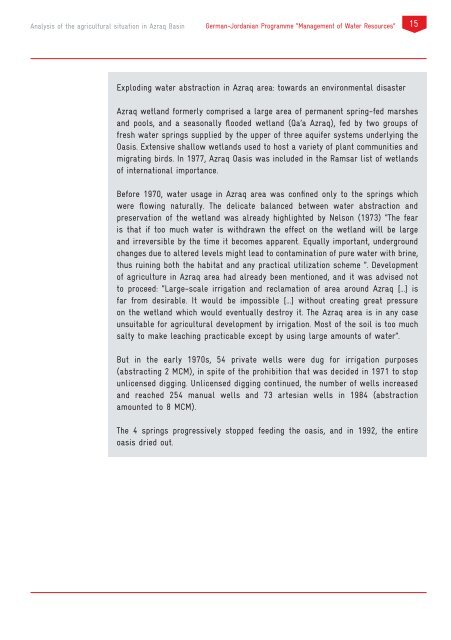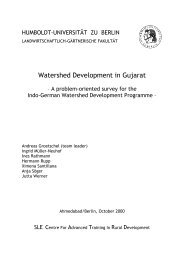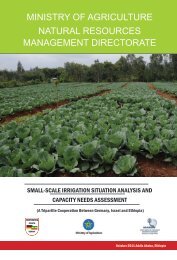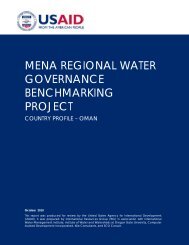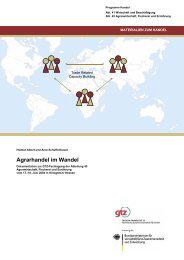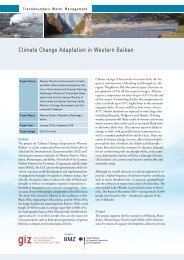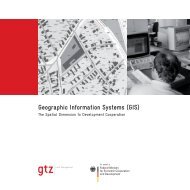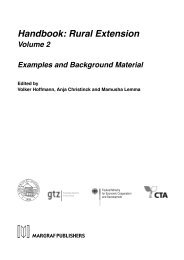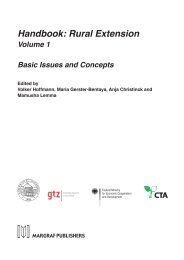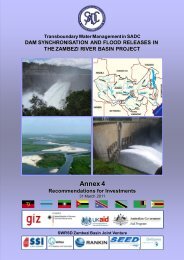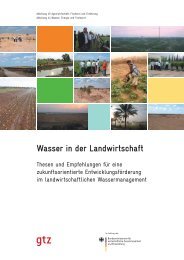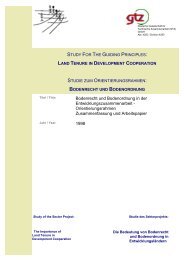Farming in the - WordPress.com
Farming in the - WordPress.com
Farming in the - WordPress.com
Create successful ePaper yourself
Turn your PDF publications into a flip-book with our unique Google optimized e-Paper software.
Analysis of <strong>the</strong> agricultural situation <strong>in</strong> Azraq Bas<strong>in</strong><br />
German-Jordanian Programme “Management of Water Resources”<br />
15<br />
Explod<strong>in</strong>g water abstraction <strong>in</strong> Azraq area: towards an environmental disaster<br />
Azraq wetland formerly <strong>com</strong>prised a large area of permanent spr<strong>in</strong>g-fed marshes<br />
and pools, and a seasonally flooded wetland (Qa’a Azraq), fed by two groups of<br />
fresh water spr<strong>in</strong>gs supplied by <strong>the</strong> upper of three aquifer systems underly<strong>in</strong>g <strong>the</strong><br />
Oasis. Extensive shallow wetlands used to host a variety of plant <strong>com</strong>munities and<br />
migrat<strong>in</strong>g birds. In 1977, Azraq Oasis was <strong>in</strong>cluded <strong>in</strong> <strong>the</strong> Ramsar list of wetlands<br />
of <strong>in</strong>ternational importance.<br />
Before 1970, water usage <strong>in</strong> Azraq area was conf<strong>in</strong>ed only to <strong>the</strong> spr<strong>in</strong>gs which<br />
were flow<strong>in</strong>g naturally. The delicate balanced between water abstraction and<br />
preservation of <strong>the</strong> wetland was already highlighted by Nelson (1973) “The fear<br />
is that if too much water is withdrawn <strong>the</strong> effect on <strong>the</strong> wetland will be large<br />
and irreversible by <strong>the</strong> time it be<strong>com</strong>es apparent. Equally important, underground<br />
changes due to altered levels might lead to contam<strong>in</strong>ation of pure water with br<strong>in</strong>e,<br />
thus ru<strong>in</strong><strong>in</strong>g both <strong>the</strong> habitat and any practical utilization scheme ”. Development<br />
of agriculture <strong>in</strong> Azraq area had already been mentioned, and it was advised not<br />
to proceed: “Large-scale irrigation and reclamation of area around Azraq […] is<br />
far from desirable. It would be impossible [...] without creat<strong>in</strong>g great pressure<br />
on <strong>the</strong> wetland which would eventually destroy it. The Azraq area is <strong>in</strong> any case<br />
unsuitable for agricultural development by irrigation. Most of <strong>the</strong> soil is too much<br />
salty to make leach<strong>in</strong>g practicable except by us<strong>in</strong>g large amounts of water”.<br />
But <strong>in</strong> <strong>the</strong> early 1970s, 54 private wells were dug for irrigation purposes<br />
(abstract<strong>in</strong>g 2 MCM), <strong>in</strong> spite of <strong>the</strong> prohibition that was decided <strong>in</strong> 1971 to stop<br />
unlicensed digg<strong>in</strong>g. Unlicensed digg<strong>in</strong>g cont<strong>in</strong>ued, <strong>the</strong> number of wells <strong>in</strong>creased<br />
and reached 254 manual wells and 73 artesian wells <strong>in</strong> 1984 (abstraction<br />
amounted to 8 MCM).<br />
The 4 spr<strong>in</strong>gs progressively stopped feed<strong>in</strong>g <strong>the</strong> oasis, and <strong>in</strong> 1992, <strong>the</strong> entire<br />
oasis dried out.


